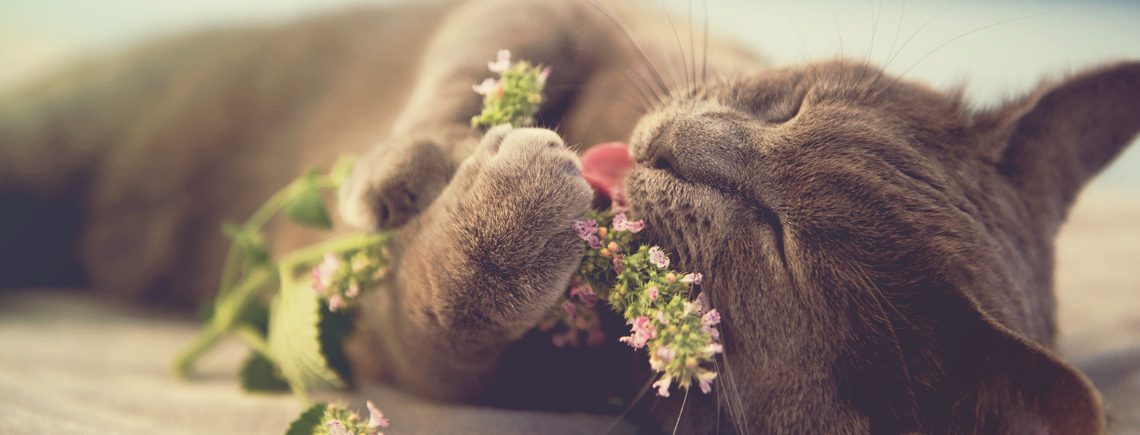What is Catnip and How Does It Affect My Cat?
Many people have heard of catnip, but may not know what it actually does to cats or the science behind it. Essentially, it is a herb that is a member of the mint family. It works by travelling to the cat’s vomeronasal gland (an extra scent organ at the roof of their mouth) that allows scents to be carried to the brain.
Deriving from Europe and Asia, ‘nepeta cararia’ has long been associated with cats—the Latin name even means ‘of a cat’! Both big and small cats share a love of this herb, but what is it exactly that makes cats go crazy? Is it safe? And what if your cat doesn’t like it?
In this blog post, we’ll give you some insight into what catnip is, what it does, and how it affects your cat’s mood and behaviour!
What is Catnip?
Catnip is a common herb that is part of the mint family. It is a grayish-green plant, with sharp heart shaped leaves, and thick stems that are coated in fuzzy hairs. It produces a chemical called nepetalactone in microscopic bulbs that cover its leaves, stems, and seedpods. When these bulbs burst, nepetalactone is released into the air, where both cats and butterflies become attracted to it.
How Does Catnip Affect My Cat?
Some cats love catnip, others don’t; it comes down to the genetics of your cat. Approximately 1 in 2 cats inherits a sensitivity to the herb, but you won’t find out until your kitten is aged between three and six months.
What attracts cats to catnip is the nepetalactone chemical that is released from the bulbs; this can trigger many different responses in your cat. Once your cat smells the catnip, they may begin to rub, kick, chew, and roll in it in an attempt to release the chemical that is trapped in the plant’s leaves.
Catnip imitates feline sex hormones, so if your cat is enjoying this herb, they may show behaviours that are similar to a female cat in heat. Both male and female cats can experience this.
Behaviours include open signs of affection, relaxation, and happiness. Other cats may show active behaviours like playfulness, licking, chewing, jumping, aggression, and hyperactivity. For cats that enjoy catnip, it can help with separation anxiety and even relieve pain.
The affects of catnip usually last between 10 and 15 minutes. The dose of catnip and how your cat consumes it will determine their response; the more your cat eats or inhales it, the stronger the effect will be.

How to Use Catnip
Catnip is often used to promote exercise and play in cats, and can also be used as a training aid. Place a small amount of catnip on your cat’s scratching post to encourage your cat to start scratching, or in their car carrier to encourage them to get inside. This helps create a positive association, decreases your cat’s anxiety and helps keep them calm.
You can also place some catnip on their beds or any areas they like to hide to help them relax and go to sleep.
Catnip is available in many different forms, such as:
- Fresh catnip (from your own garden)
- Catnip spray
- Toys stuffed with dried catnip
- Food and treats
Can Catnip Harm My Cat?
Generally no, but an overindulgence in anything can result in issues, so avoid giving too much catnip to your cat at a time. Too much catnip can lead to vomiting, diarrhoea, dizziness, or having trouble walking. There is no specific dose of catnip to give your cat, and most cats will walk away when they have had enough. You can always discuss an appropriate amount for your cat with your veterinarian.
Catnip is safe and enjoyable for most cats, so it is worth a try to see how your cat responds. Some cats may not get a kick out of it at all, while others will love it. Although it is completely safe, we recommend using it in moderation and under supervision!

